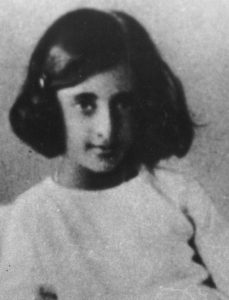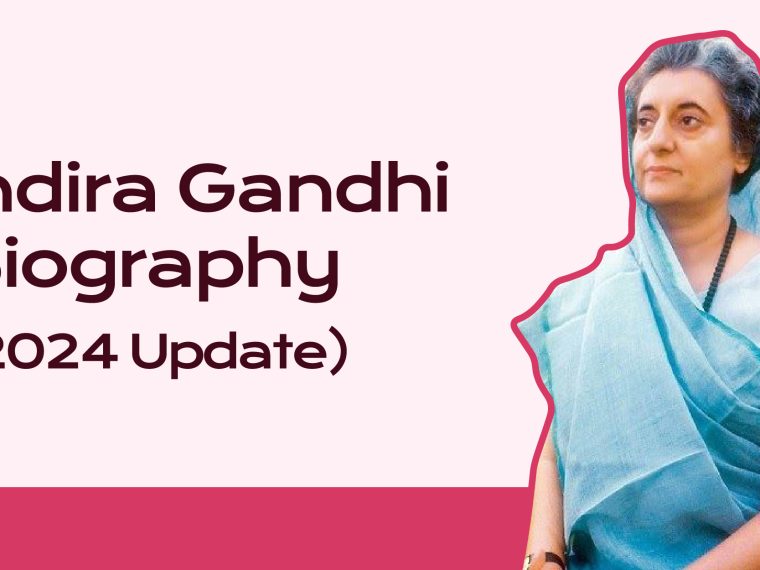Indira Gandhi is also known as the Iron Lady of India and rightly so. She remains one of the most influential and polarizing figures in Indian political history.
Born into a family that is well known in Indian politics, she inheritaed a legacy from her father, Jawaharlal Nehru. Gandhi went on to shatter gender barriers and became the first woman Prime Minister of India. Her tenure is remembered by bold reforms and geopolitical challenges.
In this article, we will explore the life and career of Indira Gandhi. We will delve into her childhood, family, career and her complex legacy. Before we go into details, here is a quick introduction about her.
Indira Gandhi Biography : Introduction
| Name | Indira Gandhi |
| Birthdate | November 19, 1917 |
| Birthplace | Allahabad, India |
| Parents | Jawaharlal Nehru (Father), Kamala Nehru (Mother) |
| Education | Somerville College, Oxford |
| Spouses | Feroze Gandhi |
| Famous for | Prime Minister of India, Political Leadership, Emergency Era |
| Zodiac Sign | Scorpio |
| Height | 5 feet 4 inches (approx. 163 cm) |
Childhood and Parents: Indira Gandhi Biography
Indira Gandhi, born on November 19, 1917, in Allahabad, India, was the only child of Jawaharlal Nehru, the first Prime Minister of India, and Kamala Nehru. She received her education at prestigious institutions including Somerville College, Oxford.
Indira Gandhi grew up in a politically charged environment. Her father Jawaharlal Nehur is a prominent figure in India’s struggle for independence. Her childhood was marked by exposure to various political ideologies and events, shaping her understanding of governance and leadership from an early age.
Indira Gandhi’s childhood was profoundly influenced by her familial environment and the turbulent political landscape of India during the early 20th century. Born on November 19, 1917, in Allahabad, she was the only child of Jawaharlal Nehru, a towering figure in India’s struggle for independence, and Kamala Nehru, a social and political activist in her own right. Growing up in the Nehru household, young Indira was exposed to diverse political ideologies and discussions, with her father often hosting prominent leaders and intellectuals.
Despite being born into privilege, Indira’s childhood was not devoid of challenges. Her father’s frequent incarcerations under British colonial rule meant that she spent periods of her early life separated from him. This separation, however, strengthened the bond between father and daughter and instilled in Indira a deep sense of commitment to India’s freedom struggle.

Indira’s mother, Kamala Nehru, also played a significant role in shaping her childhood. Kamala’s active involvement in social and political causes, despite her own health struggles, served as an inspiration to Indira. Kamala’s compassionate nature and dedication to serving the less fortunate left a lasting impression on her daughter, influencing Indira’s own approach to governance later in life.
Despite the challenges of her upbringing, Indira Gandhi’s childhood was marked by a sense of purpose and duty instilled by her parents. Their commitment to India’s independence movement and their unwavering belief in the principles of democracy and social justice laid the foundation for Indira’s future as a leader.
It was amidst the backdrop of India’s quest for freedom and the Nehru household’s intellectual fervor that young Indira Gandhi began her journey towards becoming one of the most influential figures in Indian history.
Education: Indira Gandhi Biography
Indira Gandhi was an excellent student since the beginning.
After completing her schooling in India, she went to England to pursue higher education. There she studied history, political science, and economics. Her time abroad broadened her understanding of global affairs and provided her with the intellectual foundation necessary for a future leader.
Despite the challenges faced by women in academia during that era, Indira excelled at studies.
Marriage and Family: Indira Gandhi
Biography
In 1942, Indira Gandhi married Feroze Gandhi, a prominent journalist and member of the Indian National Congress. Their marriage was not only a personal union but also a political alliance, as Feroze Gandhi was actively involved in the freedom struggle alongside his wife. The couple had two sons, Rajiv and Sanjay Gandhi. Despite facing challenges in their relationship, including Feroze Gandhi’s health issues and political differences, their marriage endured until his untimely death in 1960. Indira Gandhi’s family played a significant role in both her personal life and her political career, providing support and companionship amidst the tumultuous landscape of Indian politics.
Indira Gandhi and Feroze Gandhi were blessed with two sons, Rajiv and Sanjay Gandhi. Rajiv Gandhi, born in 1944, would go on to follow in his mother’s footsteps, eventually serving as the Prime Minister of India from 1984 to 1989. Known for his affable demeanor and modernizing initiatives, Rajiv Gandhi played a pivotal role in shaping India’s technological landscape through initiatives like the introduction of computers and telecommunications reforms.
Sanjay Gandhi, born in 1946, was actively involved in politics alongside his mother but met an untimely demise in 1980 in a tragic plane crash. Despite his short-lived political career, Sanjay Gandhi left a lasting impact on Indian politics through his controversial initiatives such as the sterilization campaign during the Emergency era.
Both Rajiv and Sanjay Gandhi, despite their divergent paths and legacies, played significant roles in shaping the political narrative of India during their respective times, carrying forward the legacy of the Nehru-Gandhi family.
Career: Indira Gandhi Biography
Indira Gandhi’s political journey began under the mentorship of her father, Jawaharlal Nehru. She served as an unofficial personal assistant to him during his tenure as Prime Minister. In 1966, after his death, she assumed the leadership of the Indian National Congress and became the Prime Minister of India, making history as the first woman to hold that position in the country.
During her time in office, Indira Gandhi implemented various social and economic reforms, including the nationalization of banks and the abolition of princely privileges. However, her leadership was also marred by controversies, including the declaration of a state of emergency in 1975, which suspended civil liberties and led to widespread criticism.
Indira Gandhi’s political career spanned several decades and was characterized by both triumphs and controversies. Following in the footsteps of her father, Jawaharlal Nehru, she emerged as a prominent leader within the Indian National Congress party and eventually ascended to the highest office in the country.
After the untimely death of Lal Bahadur Shastri in 1966, Indira Gandhi was elected as the Prime Minister of India, making history as the first woman to hold this position. Over the course of her tenure, which lasted from 1966 to 1977 and again from 1980 to 1984, she implemented a series of ambitious reforms aimed at addressing various socio-economic challenges facing the nation.
Reforms during her tenure as Prime Minister
During her tenure, Indira Gandhi has done many wonderful work. Some of the major works are listed below:
- **Nationalization of Banks:** One of the landmark initiatives of Indira Gandhi’s government was the nationalization of major banks in 1969. This move aimed to bring about greater financial inclusion and address disparities in access to banking services, particularly in rural areas. By bringing the banking sector under public control, the government sought to mobilize resources for priority sectors such as agriculture, small-scale industries, and infrastructure development.
- **Green Revolution:** Indira Gandhi’s tenure witnessed the implementation of the Green Revolution, a series of agricultural reforms aimed at increasing food production through the adoption of modern farming techniques, high-yielding crop varieties, and irrigation infrastructure. These measures helped India achieve self-sufficiency in food grains and alleviate hunger and poverty in many parts of the country.
- **Garibi Hatao (Eradicate Poverty) Campaign:** Indira Gandhi’s government launched the Garibi Hatao campaign as a flagship initiative to combat poverty and promote inclusive growth. This campaign focused on poverty alleviation measures such as land reforms, rural development programs, employment generation schemes, and social welfare initiatives targeting marginalized communities.
- **Foreign Policy:** Indira Gandhi pursued a robust foreign policy agenda, seeking to assert India’s role on the global stage and strengthen ties with other nations. She maintained a policy of non-alignment while advocating for global disarmament and nuclear non-proliferation. However, her tenure also saw significant geopolitical challenges, including the Indo-Pakistani War of 1971, which led to the creation of Bangladesh.
- **Emergency Era:** One of the most controversial aspects of Indira Gandhi’s tenure was the declaration of a state of emergency in 1975, which lasted until 1977. During this period, civil liberties were suspended, political opponents were arrested, and censorship was imposed on the media. While the Emergency was justified by Gandhi as necessary for maintaining law and order, it was widely criticized for its authoritarianism and violation of democratic principles.
Indira Gandhi’s tenure as Prime Minister was marked by a mix of progressive reforms, political maneuvering, and assertive leadership. While her legacy remains deeply polarizing, there is no denying her significant impact on shaping the trajectory of modern India through her policies and leadership style.
Death: Indira Gandhi Biography
Indira Gandhi’s life came to a tragic end on October 31, 1984, when she was assassinated by her own bodyguards in retaliation for the military operation she ordered at the Golden Temple, the holiest shrine of Sikhism, to flush out Sikh militants.
Indira is still a celebrated figure in India, and many people still acknowledge her as the best prime minister the country has ever got. Here is a social media community celebrating her life and work.
Frequently Asked Questions : Indira Gandhi Biography
-
What was Indira Gandhi famous for?
Indira Gandhi was renowned for her leadership as the Prime Minister of India, her role in shaping the country’s political landscape, and her implementation of various socio-economic reforms.
-
What was the Emergency Era in India?
The Emergency Era refers to the period from 1975 to 1977 when Indira Gandhi declared a state of emergency, suspending civil liberties and granting herself extraordinary powers to govern the country. This period was marked by censorship, political repression, and human rights violations.
-
How tall was Indira Gandhi?
Indira Gandhi was approximately 5 feet 4 inches tall (163 cm).



